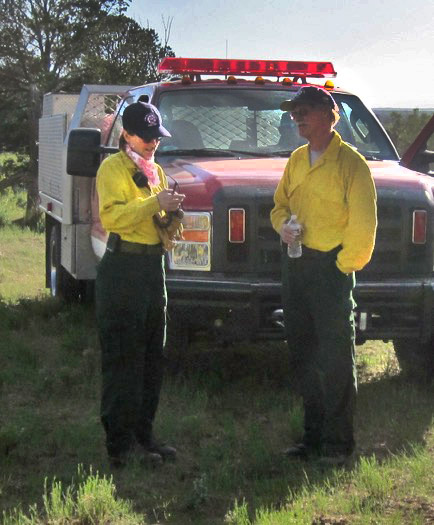Colleen Hollenbeck, Ouray County Coroner
Courage and Compassion
Story by Kathryn R. Burke
 [Ouray, Colo. March 15,2016] Collen Hollenbeck is now on her second term as elected coroner and has held that position since 2011. Before that, she served as deputy coroner under Gary Miller, who suggested she run when he retired from the position.
[Ouray, Colo. March 15,2016] Collen Hollenbeck is now on her second term as elected coroner and has held that position since 2011. Before that, she served as deputy coroner under Gary Miller, who suggested she run when he retired from the position.
“I hadn’t really thought of it before,” she said. “But Gary said to me: ‘It’s killin’ me.’ We had 14 deaths that year. He made me one of two deputy coroners and later asked me if I would run for the office.”
During most of her tenure, Hollenbeck, a registered nurse with a Masters Degree in Community Health and Administration, did double duty as nurse with hospice out of their Montrose facility. “I was their first nurse here,” she said, “and the Clinical Coordinator. “ Since then the organization, now called Hope West, has expanded to a staff of 300 caring for more than 2,500 patients in a five-county area, including Ouray.
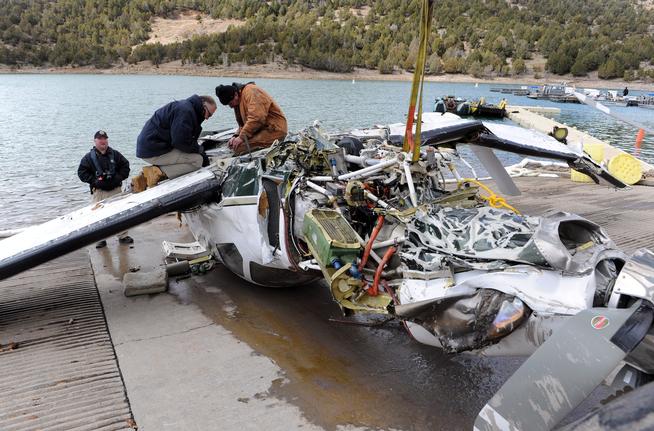
Ouray County and Federal officials survey the damage of a small aircraft Thursday March 27, 2014, at the Ridgway Reservoir near Ridgway, Colo., The plane crashed last Saturday March 22, 2014 killing five people. (William Woody, Special to The Denver Post)
Her nursing and administrative background make her a particularly effective coroner. The job requires compassion in dealing with the families of the deceased and a good dose of curiosity to undertake investigations, where appropriate or necessary, into the manner of death. Hollenbeck certainly possesses both qualities. She also completed the course, within a couple months of her election, to obtain death investigator certification through an accredited program.
What exactly does she do? Hollenbeck explained several key components of her job.
• By statute, the coroner must determine cause and manner of all deaths that occur in Ouray County.
• Another part of the job is to work with other agencies and entities, such as Emergency Medical services, Public Health, and the Sheriff’s Department to evaluate what we can do for preventable deaths. Ouray County is dangerous. We have mountains and cliffs and unmarked areas where people can explore. So we partner with other agencies to caution people who come to visit here about things like altitude sickness, the need for hydration, and care in participating in physical activities that could be detrimental to their health.
• It is the Coroner’s job to notify next of kin when a death occurs. Sometimes, when it involves an automobile accident, we to it through proxy with local law enforcement, or with the Colorado State Patrol Victim Advocate.
• Another function of this position is to decrease risk to Ouray County. Attending to the needs of grieving family and loved ones can be time consuming but reflects who we are as a county.
• The Coroner may pronounce death.
Hollenbeck has participated in several particularly newsworthy cases in Ouray County. In one, a local resident, who insisted on feeding the bears, wound up having the bears feed on her. “I was present at the autopsy,” she said. “We don’t have to be, but it sure helps to put the details together with the pathologist autopsy.”
In the aftermath of a recent tragic plane crash, in which the pilot, a passenger, and two children perished, at the request of the family, Hollenbeck personally participated in the extraction of the victim. “The family wanted a woman, a compassionate retrieval, and, with the help of Ruth Stewart, Colette Miller (both EMS) and Kirsten Copeland, State Park Director, we were able to do that for them.”
Following the recent mine accident where men were killed, when the family wanted to be there when the victims were brought out, “I said yes,” Hollenbeck said. “We all strive for th spiritual connection, but sometimes we have to let family view the person who died, for some kind of proof it is really true. They are in shock, I want to help them as much as I can to understand what happened to their loved one.
So yes, compassion—when dealing with the dying and the newly bereaved, and helping them find closure, especially when an investigation (characterized by a healthy sense of curiosity) is called for—are certainly descriptive of Colleen Hollenbeck, Ouray County Corner. I would also add Courage, for to juggle all the aspects of a job in a unique county like this one, takes a particular kind of courage.
Related Stories
“Plane crash victims recovered from Ridgway Reservoir.” The Denver Post.
“5 bodies found inside plane crash wreckage in Colorado reservoir: authorities” NY Daily News.
“Man found in Ouray County ditch died of exposure” By Associated Press/Montrose Daily Press
This article also appears on website for the Woman’s Club of Ouray County. Designed and maintained by Kathryn R. Burke.
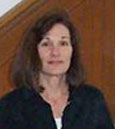 A Balancing Act. [Ouray Colo., April 21. 2015] Connie Hunt comes from a family of eight, so learning to balance people, tasks, and time comes naturally. And with a background of nine years in banking, 25 consecutive years in county administration, and a masters degree in public administration, Hunt understands how to balance people and politics.
A Balancing Act. [Ouray Colo., April 21. 2015] Connie Hunt comes from a family of eight, so learning to balance people, tasks, and time comes naturally. And with a background of nine years in banking, 25 consecutive years in county administration, and a masters degree in public administration, Hunt understands how to balance people and politics.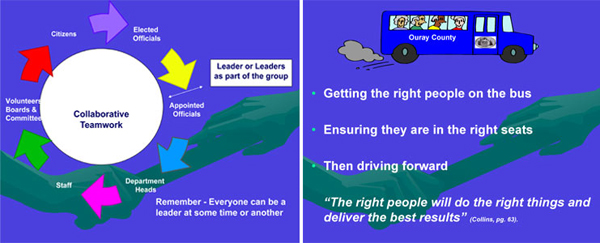
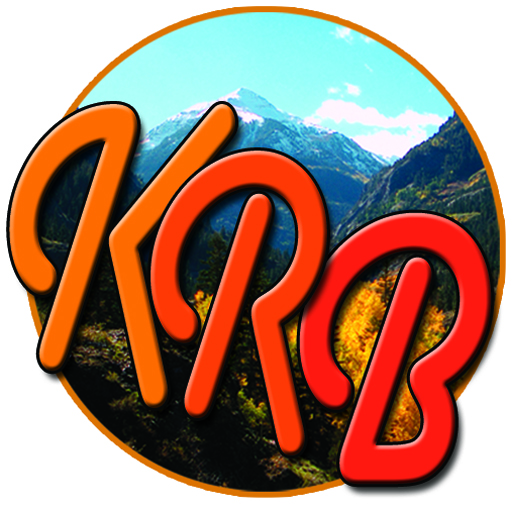

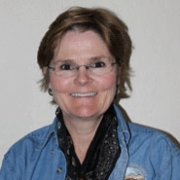
 [Ouray, Colo. March 15,2016] Collen Hollenbeck is now on her second term as elected coroner and has held that position since 2011. Before that, she served as deputy coroner under Gary Miller, who suggested she run when he retired from the position.
[Ouray, Colo. March 15,2016] Collen Hollenbeck is now on her second term as elected coroner and has held that position since 2011. Before that, she served as deputy coroner under Gary Miller, who suggested she run when he retired from the position.
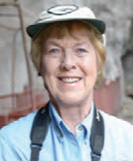
 [Ouray, Colo. March 17, 2015] “The Black Swift could be called the most elusive bird on earth,” Hirshman believes. “The birds don’t make it easy to find or observe them.” They like to nest in caves, near waterfalls, where rocky ledges and inhospitable terrain protect them from predators.
[Ouray, Colo. March 17, 2015] “The Black Swift could be called the most elusive bird on earth,” Hirshman believes. “The birds don’t make it easy to find or observe them.” They like to nest in caves, near waterfalls, where rocky ledges and inhospitable terrain protect them from predators.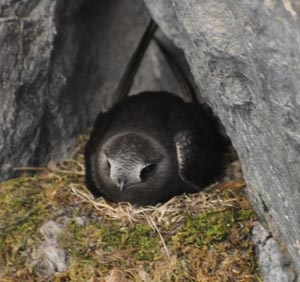 One of the more accessible locations for these mysterious birds right Box Canyon in Ouray, Colorado. Hirshman has been watching the Black Swift and recording their activities here nearly 20 years. “I hope I can study this bird until I’m 90,” she told Samantha Tisdel Wright for an article in the ‘2014 Adventure Summer Guide’ (1) “As long as I am able to walk, I am going to go over there” and watch those birds.
One of the more accessible locations for these mysterious birds right Box Canyon in Ouray, Colorado. Hirshman has been watching the Black Swift and recording their activities here nearly 20 years. “I hope I can study this bird until I’m 90,” she told Samantha Tisdel Wright for an article in the ‘2014 Adventure Summer Guide’ (1) “As long as I am able to walk, I am going to go over there” and watch those birds.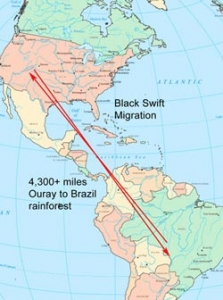 But she does more than just ‘watch.’ Using a Nikon D-90 with an AF-S Nikkor 70-300 mm lens for close-ups, she gets some outstanding photographs. Hirshman has helped team members band birds. Although Hirshman did not directly help the team to attach geo-locators, many birds were also fitted with that device to track their annual migration – all the way to Brazil and back!
But she does more than just ‘watch.’ Using a Nikon D-90 with an AF-S Nikkor 70-300 mm lens for close-ups, she gets some outstanding photographs. Hirshman has helped team members band birds. Although Hirshman did not directly help the team to attach geo-locators, many birds were also fitted with that device to track their annual migration – all the way to Brazil and back!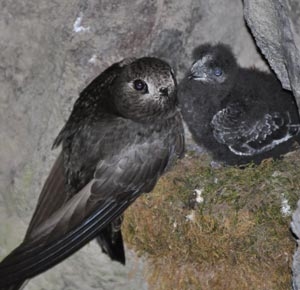 Hirshman’s observations and photographs have been reported in numerous publications and scientific studies. Google ‘Sue Hirshman Black Swift’ and you get several pages of ‘hits,’ including links to articles she writes for the local Ouray County Newspaper. (2) Hirshman relates results of a detailed study of 11 years of Black Swift breeding phenology and success at Box Canyon.(5) “Box Canyon is known as Colorado’s largest nesting colony and the most accessible viewing opportunity, which has gained world attention as an important Birding Area,” Hirshman explains. Hirshman and Carolyn Gunn are updating that study to include another nine years.
Hirshman’s observations and photographs have been reported in numerous publications and scientific studies. Google ‘Sue Hirshman Black Swift’ and you get several pages of ‘hits,’ including links to articles she writes for the local Ouray County Newspaper. (2) Hirshman relates results of a detailed study of 11 years of Black Swift breeding phenology and success at Box Canyon.(5) “Box Canyon is known as Colorado’s largest nesting colony and the most accessible viewing opportunity, which has gained world attention as an important Birding Area,” Hirshman explains. Hirshman and Carolyn Gunn are updating that study to include another nine years.
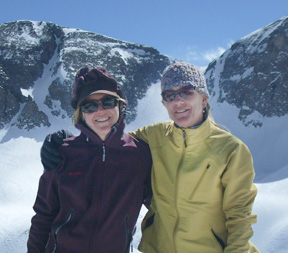 Susan Hale and Ann Mellick are avalanche forecasters for the Colorado Avalanche Information Center (CAIC). They work on the Highway 550 and 145 corridors in conjunction with the Colorado Department of Transportation (CDOT) to keep the highways safe for winter travelers. Both have been employees of the CAIC since 2006, with previous backgrounds in snow and avalanche work in the Colorado Rockies.
Susan Hale and Ann Mellick are avalanche forecasters for the Colorado Avalanche Information Center (CAIC). They work on the Highway 550 and 145 corridors in conjunction with the Colorado Department of Transportation (CDOT) to keep the highways safe for winter travelers. Both have been employees of the CAIC since 2006, with previous backgrounds in snow and avalanche work in the Colorado Rockies.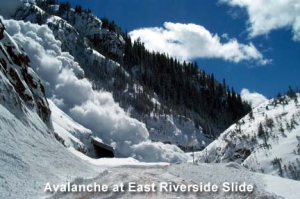 Susan. A love for the mountains and back-country adventure lured Susan to the Colorado Rockies 28 years ago. Innumerable ski mountaineering escapades and a few encounters with avalanches left her with both respect and curiosity for avalanche phenomena. This interest was piqued during her ten years with the Snowmass Ski Patrol’s Snow Safety Team where she also oversaw the Avalanche Rescue Dog program. In 2004 an irresistible opportunity came along to work as an intern forecaster for the San Juan CAIC office. Here she learned the intricacies of local highway forecasting. Two years later, Susan was on board as a full time forecaster in the Silverton CAIC office.
Susan. A love for the mountains and back-country adventure lured Susan to the Colorado Rockies 28 years ago. Innumerable ski mountaineering escapades and a few encounters with avalanches left her with both respect and curiosity for avalanche phenomena. This interest was piqued during her ten years with the Snowmass Ski Patrol’s Snow Safety Team where she also oversaw the Avalanche Rescue Dog program. In 2004 an irresistible opportunity came along to work as an intern forecaster for the San Juan CAIC office. Here she learned the intricacies of local highway forecasting. Two years later, Susan was on board as a full time forecaster in the Silverton CAIC office.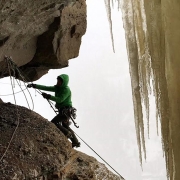
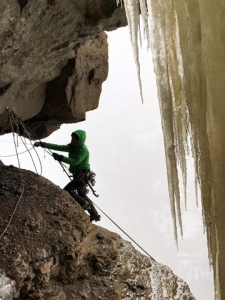 [Ouray, Colo. October 20, 2015] Beth Goralski has been ice climbing since 2001. During a holiday vacation from Colorado State University, where she was a student, Beth took an ice climbing class. “I fell in love immediately” she said. “I had been rock climbing for quite a few years, so the transition was pretty easy for me.”
[Ouray, Colo. October 20, 2015] Beth Goralski has been ice climbing since 2001. During a holiday vacation from Colorado State University, where she was a student, Beth took an ice climbing class. “I fell in love immediately” she said. “I had been rock climbing for quite a few years, so the transition was pretty easy for me.”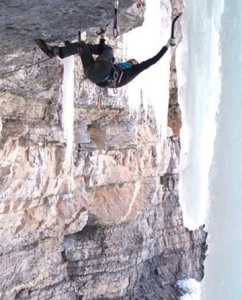 to compete in the Ouray Icefest. Last year, she also competed at the Bozeman Ice Festival in Bozeman Montana, which is now a World Cup event. This year she will return to compete in Bozeman, which is “where the world’s best mixed climbers come together to compete. There are six other world cup comps held in Europe and South Korea but Bozeman is the only one held in the Americas.”
to compete in the Ouray Icefest. Last year, she also competed at the Bozeman Ice Festival in Bozeman Montana, which is now a World Cup event. This year she will return to compete in Bozeman, which is “where the world’s best mixed climbers come together to compete. There are six other world cup comps held in Europe and South Korea but Bozeman is the only one held in the Americas.”
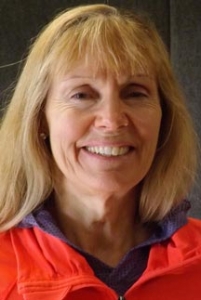 [Montrose, Colo. November 18 2014] Thirty-five years ago Lorraine Coyle and her then-husband had a glass-etching business in Lake Arrowhead, California. A lot of their products were architectural – windows and doors primarily. “I also did smaller pieces, selling them at arts and craft shows,” she says. “Which is easy to do in California, because they have a lot of them.”
[Montrose, Colo. November 18 2014] Thirty-five years ago Lorraine Coyle and her then-husband had a glass-etching business in Lake Arrowhead, California. A lot of their products were architectural – windows and doors primarily. “I also did smaller pieces, selling them at arts and craft shows,” she says. “Which is easy to do in California, because they have a lot of them.”
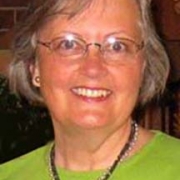
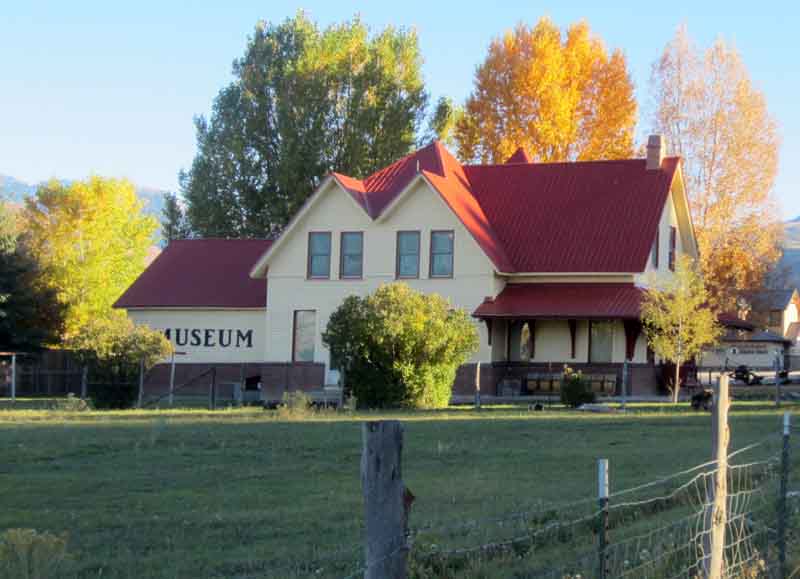
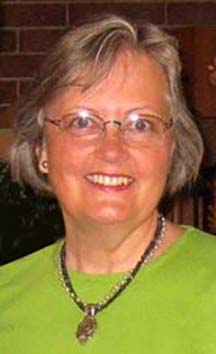
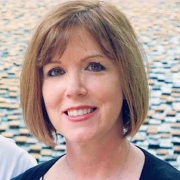
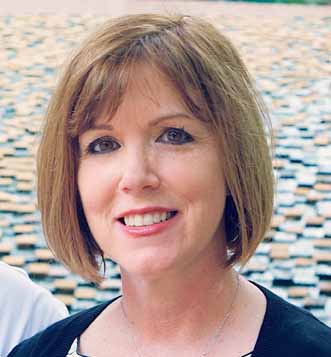 [Ouray, Colo., January 16, 2018] Bees are our friends. Bees produce honey, the only food source that never goes bad. Bees pollinate, a process that can produce a healthy garden with a bountiful crop.
[Ouray, Colo., January 16, 2018] Bees are our friends. Bees produce honey, the only food source that never goes bad. Bees pollinate, a process that can produce a healthy garden with a bountiful crop.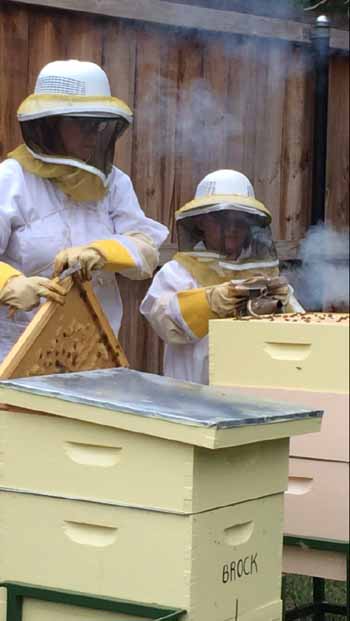 Bees have a social structure and business organization that we could all take lessons from. A typical, healthy hive has 50-60 thousand honey bees in residence, with one Queen Bee, and a harem of worker bees holding various roles from warrior to nurse. Architects make the comb and comb cleaners keep it clean. Undertakers remove the dead.
Bees have a social structure and business organization that we could all take lessons from. A typical, healthy hive has 50-60 thousand honey bees in residence, with one Queen Bee, and a harem of worker bees holding various roles from warrior to nurse. Architects make the comb and comb cleaners keep it clean. Undertakers remove the dead.
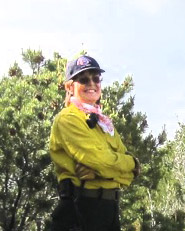 [Ridgway Colo., January 20, 2015] Log Hill Firefighter, Marian Austin retired from the Army at the end of June of 2001. Her last assignment had been at the Pentagon, “Where I worked was next to section that got hit on 9-11,” she says. “I wanted to help.” And that’s what got her thinking about community service.
[Ridgway Colo., January 20, 2015] Log Hill Firefighter, Marian Austin retired from the Army at the end of June of 2001. Her last assignment had been at the Pentagon, “Where I worked was next to section that got hit on 9-11,” she says. “I wanted to help.” And that’s what got her thinking about community service.